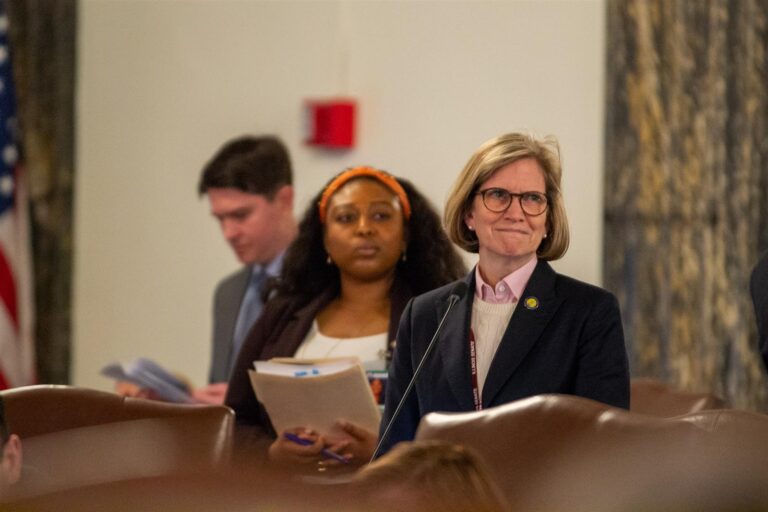SPRINGFIELD – Lawmakers advanced a measure that would require public elementary and high schools to include a unit of Native American history in their social studies curriculum, beginning with the 2024-2025 school year.
House Bill 1633 passed out of a Senate committee this week with a 10-3 vote after passing the House 75-32 last month. It now heads to the full Senate for consideration before it can head to Gov. JB Pritzker.
The measure also requires the State Education Equity Committee, which provides recommendations for advancing equity in education, include a representative from an organization that works for “economic, educational, and social progress for Native Americans.”
According to Andrew Johnson, executive director of the Native American Chamber of Commerce of Illinois, the lack of Native American representation on the committee was a “serious oversight” that didn’t reflect the state’s diversity.
“This is one of the many examples where the lack of proper education has deprived our citizens of discovering the full extent of the complexity, interrelations and impact of the people who originally inhabited this land and who continue to live here today,” Johnson said in committee.
While the legislation does not actually create curriculum for the history course, it does specify the unit should include Native American contributions in “government and the arts, humanities, and sciences, as well as the contributions of Native Americans to the economic, cultural, social, and political development of their own nations and of the United States.”
The bill also requires the unit of instruction to include descriptions of large urban Native American populations in Illinois and, for grades 6 through 12, a section on the genocide of and discrimination against Native Americans.
While the Illinois State Board of Education would provide instructional materials and guidelines for the development of the curriculum, each school district would be required to develop it on their own. Additionally, each school board will have to determine the minimum amount of time that qualifies as a unit of instruction.
It was sponsored in the Senate by Sen. Suzy Glowiak Hilton, who said in committee that teaching the subject matter has been “overlooked for far too long.”
Joseph Rupnick, chairman for Prairie Band Potawatomi Nation, said in committee that Native Americans experience higher suicide rates because of cultural disconnection, alienation and pressure to assimilate. He added the inclusion of their history in school curriculum may help them feel further connected to their community and history.
According to the U.S. Centers for Disease Control and Prevention, the U.S. suicide rate increased 33 percent from 1999 to 2017. Over the same period, the suicide rate for American Indian or Alaska Native women increased by 139 percent and 71 percent for men.
“Integrating Native history in our education system will help discriminatory myths about Native Americans in an inclusive environment free of caricatures of our families, parodies of our tradition and words that diminish our worth,” Rupnick said.

